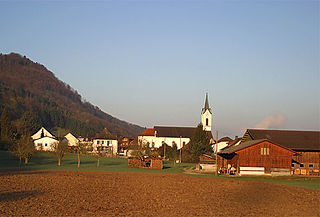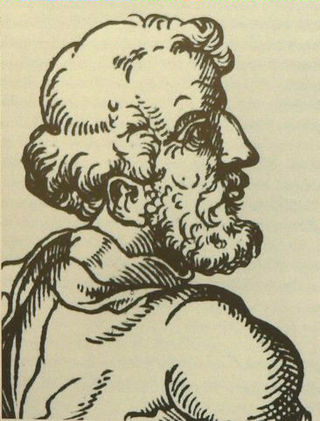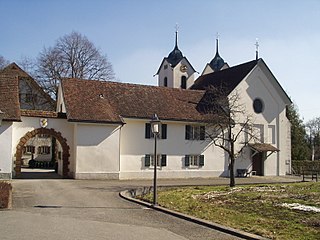
Leibstadt is a municipality in the district of Zurzach in the canton of Aargau in Switzerland.

Klaus Merz, is a Swiss writer.

Jacob Micyllus, was a German Renaissance humanist and teacher, who conducted the city's Latin school in Frankfurt and held a chair at the University of Heidelberg, during times of great cultural stress in Germany.

Meyer Kayserling was a German rabbi and historian.

The House of Franckenstein is the name of a feudal, Franconian noble family in Germany, descendants from the Dynasts of the Breuberg family; offsprings of the Lords of Lützelbach from Höchst im Odenwald.

Schenkenberg Castle is a castle ruin above the municipality of Thalheim in the canton of Aargau in Switzerland. It was built in the 13th Century by the Habsburg dynasty, was the administrative seat for 260 years of a bailiwick of the city of Bern and fell into ruin in the 18th century.

Bibran-Modlau was a Silesian noble family which was raised to Reichsfreiherr 1624.

Hermann Anton Leo Karl, Prince of Hatzfeldt, Duke of Trachenburg was a German nobleman, member of the House of Hatzfeld, civil servant and politician. He represented the Deutsche Reichspartei in the Reichstag for a number of years.

The House of Merveldt is the name of an ancient Westphalian aristocratic family, which belongs to the German nobility of the Middle Ages. The Herrn (Lords) von Merveldt were among the oldest families in the Münsterland. Merfeld, the eponymous seat of the family, is now a neighborhood of the city of Dülmen in the District of Coesfeld in the state of North Rhine-Westphalia in Germany.

The Wasserschloss Taufkirchen is a moated castle in Taufkirchen (Vils), Bavaria.

Windeck Castle, also Old Windeck Castle, is a ruined Black Forest spur castle which stands on a 378-metre-high spur in the Bühl district of Kappelwindeck, in the county of Rastatt in the German state of Baden-Württemberg.

Lydia Welti Escher, was a Swiss patron of the arts. Lydia Escher was one of the richest women in Switzerland in the 19th century, a patron of the arts who most notably established the Gottfried Keller Foundation.

Uster Castle is a hill castle which was built probably around 1200 AD by the House of Rapperswil in the Swiss municipality of Uster in the Canton of Zürich. Since 1995 it houses a boarding school.

Schauenburg Castle is a ruined hilltop castle located in Oberkirch, Germany, atop a 367-metre-high (1,204 ft) (NN) hill spur overlooking the Rench river valley above the town of Gaisbach, Baden-Württemberg. The castle was built by Duke Berthold II of Zähringen.

Böttstein Castle is a castle in the municipality of Böttstein in the canton of Aargau in Switzerland.

In der Maur is a Swiss family. Throughout the Middle Ages and Renaissance, members of the family held political offices in Berneck, St. Gallen. The In der Maur von Berneck family were first granted a coat of arms in 1478, when Hermann In der Maur was appointed as the Ammann of Berneck of the Abbot of St. Gallen. Members of the family also served as Imperial tax collectors and as clerks of the Court of Berneck. The first member of the family to hold the position of Ammann in Berneck was Ulrich In der Maur in 1435.

Hermann Heinrich Becker was a German painter, art historian, author and writer.

The Stadl family was the name of an Austrian noble family from Styria, which also belonged to the provincial nobility in Lower Austria. The lords of Stadl from the Kornberg line were raised to barons, a side branch to imperial counts styled as Reichsgraf von und zu Stadel-Kornberg. The male line of the family died out at the end of the 19th century.

The Wasserschloss Steinen is a fortified house in the northern part of the village Steinen in the district Lörrach.




















